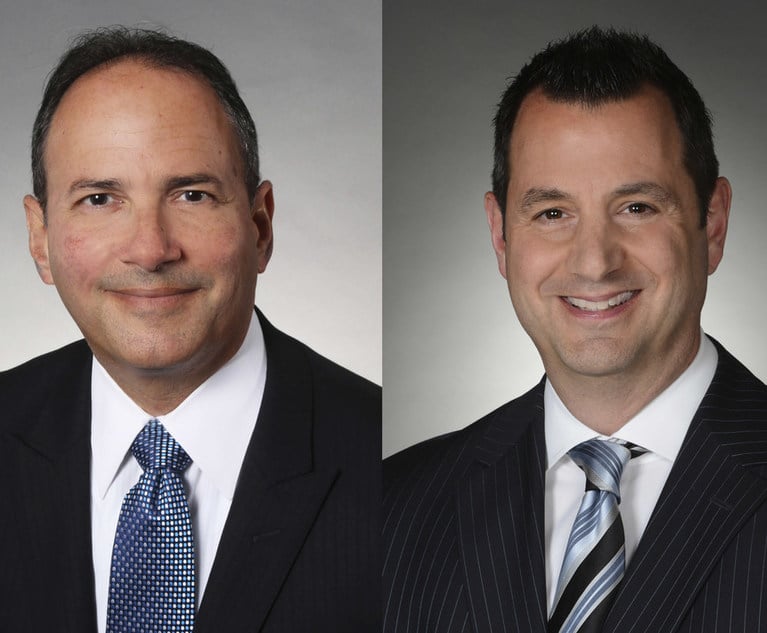 Credit: Petinovs/Adobe Stock
Credit: Petinovs/Adobe Stock Smaller Gain in US Producer Prices Hints of Cooler Inflation
A combination of materials shortages, limited labor and transportation bottlenecks sent prices soaring last year.
January 13, 2022 at 12:53 PM
2 minute read
Prices paid to U.S. producers decelerated in December as two key drivers of inflation in 2021 — food and energy — declined from a month earlier, suggesting cost pressures may be starting to ease.
The producer price index for final demand increased 0.2% from the prior month after an upwardly revised 1% jump in November, Labor Department data showed Thursday. From a year earlier, the PPI was up 9.7%, the second-largest in figures back to 2010.
The median projections in a Bloomberg survey of economists called for a 0.4% increase from a month earlier and a 9.8% annual jump.
Excluding the volatile food and energy components, the PPI climbed 0.5% in December and was up a larger-than-projected 8.3% from a year earlier.
The December pullback reflected declines in the costs of gasoline and food. The prices of services increased from a month earlier, though more moderately. The figures suggest rapid inflation is poised to cool after a combination of materials shortages, limited labor and transportation bottlenecks sent prices soaring last year.
However, the omicron variant presents an upside risk over the short term to goods prices in the months ahead, as quarantines and illness prevent many from working. A separate report Thursday showed applications for state unemployment insurance were the highest in two months.
A closely watched inflation gauge, the consumer price index, rose 7% last year, the most in nearly four decades, according to data out Wednesday. The monthly advance exceeded projections, setting the stage for the Federal Reserve to begin hiking interest rates as soon as March. Economists expect consumer inflation to moderate over 2022.
Producer prices excluding food, energy, and trade services, a measure often preferred by economists because it strips out the most volatile components, rose 0.4% from the prior month. Compared with a year earlier, the gauge increased 6.9%.
Costs of processed goods for intermediate demand, which reflect prices earlier in the production pipeline, declined 0.3% in December, the first decrease since April 2020. Compared with a year earlier, the measure jumped 24.4%.
Reade Pickert reports for Bloomberg News.
NOT FOR REPRINT
© 2025 ALM Global, LLC, All Rights Reserved. Request academic re-use from www.copyright.com. All other uses, submit a request to [email protected]. For more information visit Asset & Logo Licensing.
You Might Like
View All
Auto Dealers Ask Court to Pump the Brakes on Scout Motors’ Florida Sales
3 minute read
Saul Ewing Loses Two Partners to Fox Rothschild, Marking Four Fla. Partner Exits in Last 13 Months
3 minute read
Trending Stories
- 1States Accuse Trump of Thwarting Court's Funding Restoration Order
- 2Microsoft Becomes Latest Tech Company to Face Claims of Stealing Marketing Commissions From Influencers
- 3Coral Gables Attorney Busted for Stalking Lawyer
- 4Trump's DOJ Delays Releasing Jan. 6 FBI Agents List Under Consent Order
- 5Securities Report Says That 2024 Settlements Passed a Total of $5.2B
Who Got The Work
J. Brugh Lower of Gibbons has entered an appearance for industrial equipment supplier Devco Corporation in a pending trademark infringement lawsuit. The suit, accusing the defendant of selling knock-off Graco products, was filed Dec. 18 in New Jersey District Court by Rivkin Radler on behalf of Graco Inc. and Graco Minnesota. The case, assigned to U.S. District Judge Zahid N. Quraishi, is 3:24-cv-11294, Graco Inc. et al v. Devco Corporation.
Who Got The Work
Rebecca Maller-Stein and Kent A. Yalowitz of Arnold & Porter Kaye Scholer have entered their appearances for Hanaco Venture Capital and its executives, Lior Prosor and David Frankel, in a pending securities lawsuit. The action, filed on Dec. 24 in New York Southern District Court by Zell, Aron & Co. on behalf of Goldeneye Advisors, accuses the defendants of negligently and fraudulently managing the plaintiff's $1 million investment. The case, assigned to U.S. District Judge Vernon S. Broderick, is 1:24-cv-09918, Goldeneye Advisors, LLC v. Hanaco Venture Capital, Ltd. et al.
Who Got The Work
Attorneys from A&O Shearman has stepped in as defense counsel for Toronto-Dominion Bank and other defendants in a pending securities class action. The suit, filed Dec. 11 in New York Southern District Court by Bleichmar Fonti & Auld, accuses the defendants of concealing the bank's 'pervasive' deficiencies in regards to its compliance with the Bank Secrecy Act and the quality of its anti-money laundering controls. The case, assigned to U.S. District Judge Arun Subramanian, is 1:24-cv-09445, Gonzalez v. The Toronto-Dominion Bank et al.
Who Got The Work
Crown Castle International, a Pennsylvania company providing shared communications infrastructure, has turned to Luke D. Wolf of Gordon Rees Scully Mansukhani to fend off a pending breach-of-contract lawsuit. The court action, filed Nov. 25 in Michigan Eastern District Court by Hooper Hathaway PC on behalf of The Town Residences LLC, accuses Crown Castle of failing to transfer approximately $30,000 in utility payments from T-Mobile in breach of a roof-top lease and assignment agreement. The case, assigned to U.S. District Judge Susan K. Declercq, is 2:24-cv-13131, The Town Residences LLC v. T-Mobile US, Inc. et al.
Who Got The Work
Wilfred P. Coronato and Daniel M. Schwartz of McCarter & English have stepped in as defense counsel to Electrolux Home Products Inc. in a pending product liability lawsuit. The court action, filed Nov. 26 in New York Eastern District Court by Poulos Lopiccolo PC and Nagel Rice LLP on behalf of David Stern, alleges that the defendant's refrigerators’ drawers and shelving repeatedly break and fall apart within months after purchase. The case, assigned to U.S. District Judge Joan M. Azrack, is 2:24-cv-08204, Stern v. Electrolux Home Products, Inc.
Featured Firms
Law Offices of Gary Martin Hays & Associates, P.C.
(470) 294-1674
Law Offices of Mark E. Salomone
(857) 444-6468
Smith & Hassler
(713) 739-1250







